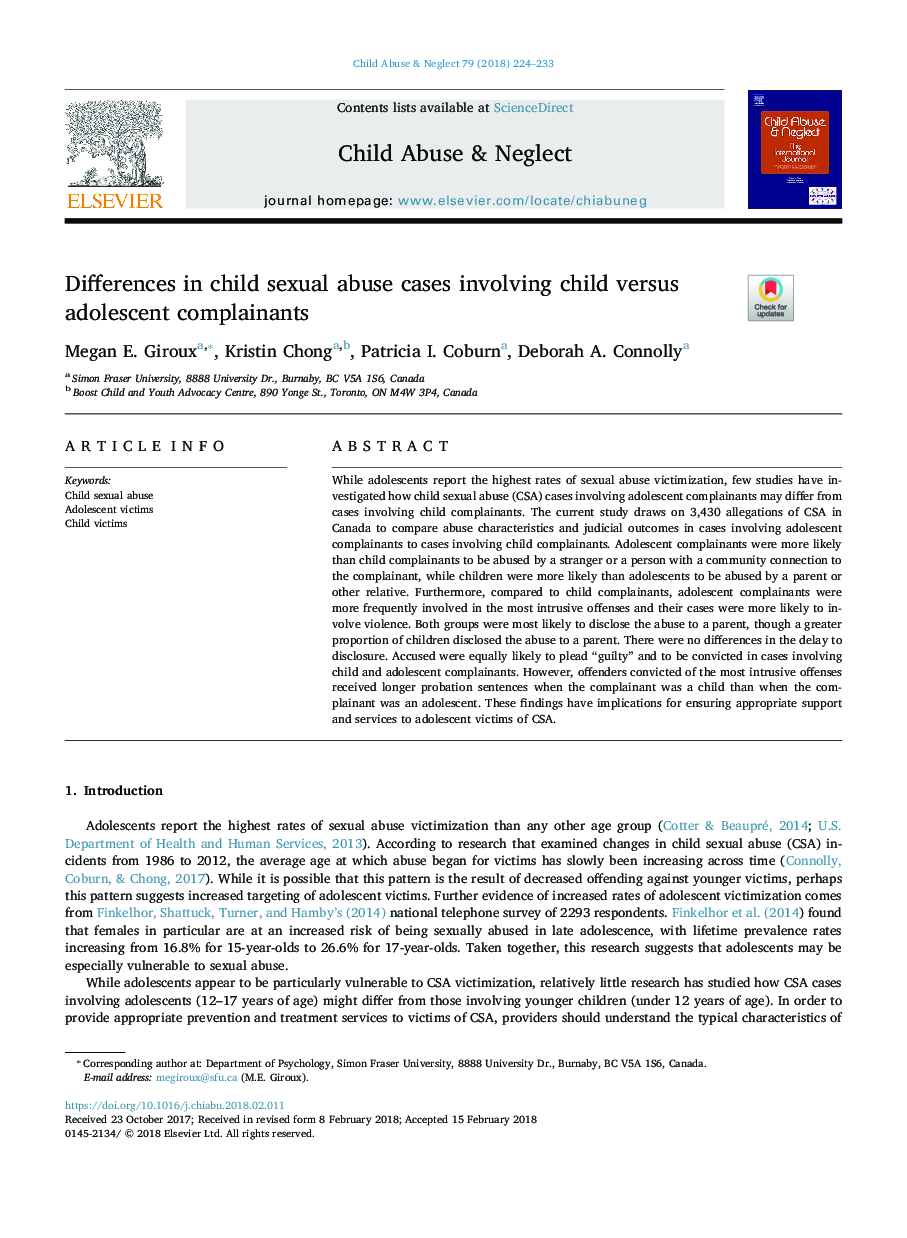| Article ID | Journal | Published Year | Pages | File Type |
|---|---|---|---|---|
| 6831998 | Child Abuse & Neglect | 2018 | 10 Pages |
Abstract
While adolescents report the highest rates of sexual abuse victimization, few studies have investigated how child sexual abuse (CSA) cases involving adolescent complainants may differ from cases involving child complainants. The current study draws on 3,430 allegations of CSA in Canada to compare abuse characteristics and judicial outcomes in cases involving adolescent complainants to cases involving child complainants. Adolescent complainants were more likely than child complainants to be abused by a stranger or a person with a community connection to the complainant, while children were more likely than adolescents to be abused by a parent or other relative. Furthermore, compared to child complainants, adolescent complainants were more frequently involved in the most intrusive offenses and their cases were more likely to involve violence. Both groups were most likely to disclose the abuse to a parent, though a greater proportion of children disclosed the abuse to a parent. There were no differences in the delay to disclosure. Accused were equally likely to plead “guilty” and to be convicted in cases involving child and adolescent complainants. However, offenders convicted of the most intrusive offenses received longer probation sentences when the complainant was a child than when the complainant was an adolescent. These findings have implications for ensuring appropriate support and services to adolescent victims of CSA.
Keywords
Related Topics
Health Sciences
Medicine and Dentistry
Perinatology, Pediatrics and Child Health
Authors
Megan E. Giroux, Kristin Chong, Patricia I. Coburn, Deborah A. Connolly,
